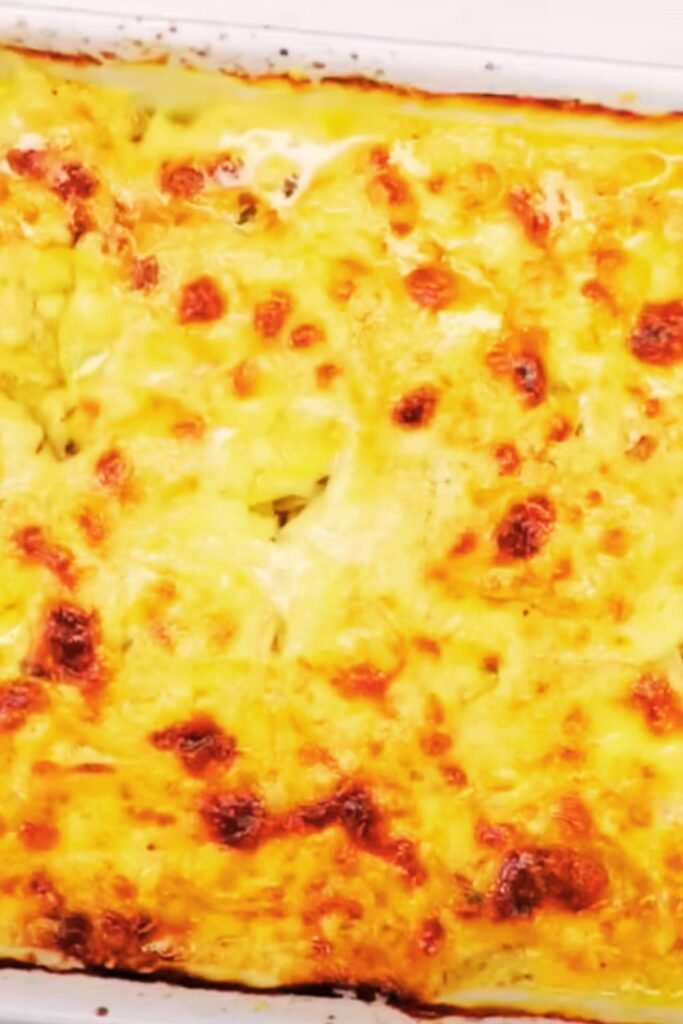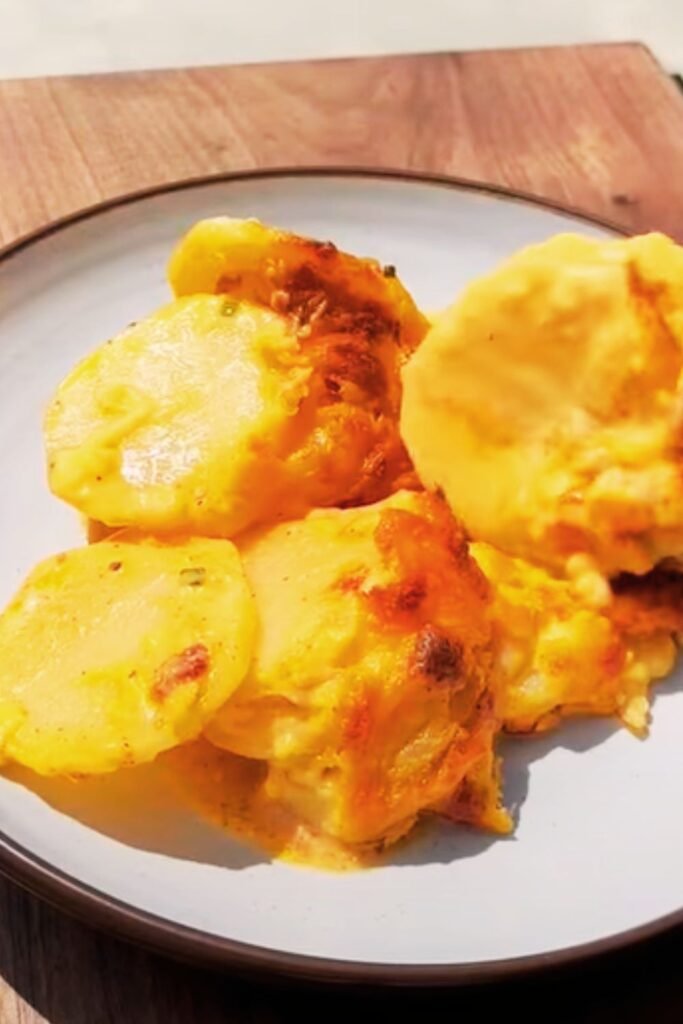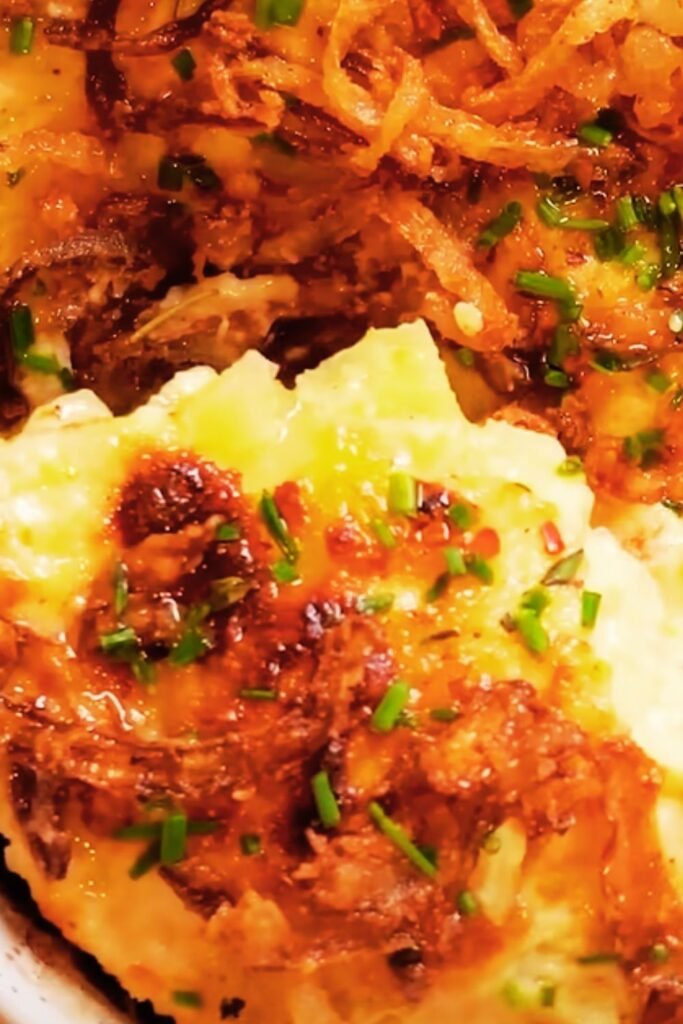There’s something truly magical about a bubbling dish of scalloped potatoes fresh from the oven. That moment when you pierce the golden, crispy top layer with a serving spoon to reveal the tender, creamy potato slices underneath—it’s nothing short of culinary poetry. After years of testing and tweaking, I’ve perfected what I confidently call the best scalloped potatoes recipe you’ll ever try. This isn’t just comfort food; it’s a showstopper that deserves center stage at your next family gathering or holiday feast.
What Makes These Scalloped Potatoes Special
Before we dive into the recipe, let’s address the elephant in the room—what’s the difference between scalloped potatoes and au gratin potatoes? Traditionally, scalloped potatoes feature sliced potatoes baked in a creamy sauce, while au gratin potatoes include cheese between the layers and on top. However, over time, these distinctions have blurred, and many recipes (including mine) incorporate elements of both styles.
My version strikes the perfect balance: thinly sliced potatoes layered with a velvety garlic-infused cream sauce and just the right amount of cheese. The result? A dish that’s rich without being overwhelming, with perfectly cooked potatoes that maintain their shape yet melt in your mouth.
Ingredients: Quality Matters
For a dish with relatively few ingredients, quality really does make a difference. Here’s what you’ll need:
- 3 pounds russet potatoes – Their high starch content creates the perfect texture
- 1 large yellow onion – For subtle sweetness that complements the potatoes
- 4 cloves garlic – Fresh, not pre-minced for best flavor
- 3 cups heavy cream – Yes, real cream makes a difference here
- 1 cup whole milk – Creates the perfect consistency
- 3 tablespoons unsalted butter – European-style if possible
- 2 teaspoons fresh thyme leaves – The aromatic secret weapon
- 2 bay leaves – For depth of flavor
- 2 cups sharp cheddar cheese, freshly grated – Pre-shredded won’t melt as beautifully
- 1 cup Gruyère cheese, freshly grated – For that nutty, Alpine flavor
- 2 tablespoons all-purpose flour – Just enough to thicken without becoming gluey
- 1½ teaspoons kosher salt – Diamond Crystal preferred
- ¾ teaspoon freshly ground black pepper – Freshly ground is non-negotiable
- ¼ teaspoon freshly grated nutmeg – The secret ingredient that elevates everything
Essential Equipment
Gathering the right tools before starting will make this recipe a breeze:
- Mandoline slicer – For perfectly uniform potato slices
- Large, heavy-bottomed saucepan – For the cream sauce
- 9×13-inch baking dish – Ceramic or glass works best
- Sharp chef’s knife – For precise onion and garlic mincing
- Box grater – For freshly grated cheese

Preparation: The Key to Success
I’ve learned that taking the time for proper prep makes all the difference in scalloped potatoes. Here’s my step-by-step approach:
Step 1: Prepare Your Potatoes
- Preheat your oven to 350°F (175°C). Position a rack in the middle.
- Wash and peel the potatoes. Some recipes skip peeling, but I find the texture is more luxurious without the skins.
- Using a mandoline set to approximately 1/8-inch thickness, slice the potatoes. This uniform thickness ensures even cooking—critical for perfect scalloped potatoes.
- As you slice, place the potatoes in a large bowl of cold water. This rinses away excess starch and prevents discoloration. Let them soak for about 5 minutes.
- Drain thoroughly and pat dry with clean kitchen towels. Wet potatoes will dilute your carefully crafted cream sauce.
Step 2: Create the Infused Cream Base
- Finely dice the onion and mince the garlic cloves.
- In a large saucepan over medium heat, melt the butter until it foams.
- Add the onion and cook until translucent, about 5-7 minutes. Avoid browning—we want sweetness, not caramelization.
- Add the minced garlic and cook for just 30 seconds until fragrant. Be vigilant here—burnt garlic will ruin the entire dish.
- Sprinkle the flour over the onion-garlic mixture and stir constantly for 2 minutes to cook out the raw flour taste.
- Slowly pour in the cold cream and milk, whisking constantly to prevent lumps.
- Add the thyme leaves, bay leaves, salt, pepper, and freshly grated nutmeg.
- Bring to a gentle simmer (never a full boil), stirring frequently until the mixture thickens slightly—about 5-7 minutes.
- Remove from heat and fish out the bay leaves. Let the cream mixture cool slightly.
Assembly: Creating Layers of Flavor
The way you build your scalloped potatoes directly impacts the final texture. Here’s my foolproof layering technique:
- Butter your baking dish generously—don’t skimp here.
- Pour about ¼ cup of the cream mixture to lightly coat the bottom of the dish.
- Layer one-third of the potato slices, slightly overlapping like fallen dominoes. This arrangement allows the cream to flow between slices.
- Pour one-third of the remaining cream sauce over the potatoes.
- Sprinkle with one-third of the cheddar and Gruyère cheese mixture.
- Repeat the layers twice more, finishing with a generous layer of cheese on top.
Pro tip: For maximum flavor penetration, gently press down on the layers after each addition of cream sauce. This ensures every potato slice gets coated.
Baking: Patience Yields Perfection
Proper baking is crucial for achieving that perfect balance between creamy interior and golden crust:
- Cover the baking dish tightly with aluminum foil.
- Bake covered for 45 minutes. This gentle steaming ensures the potatoes cook through without the top burning.
- Remove the foil and continue baking for an additional 35-45 minutes until deeply golden brown on top and bubbling around the edges.
- The essential test: Insert a paring knife into the center—it should slide through the potatoes without resistance.
- Allow to rest for at least 15 minutes before serving. This resting period allows the sauce to set and makes for cleaner portions.

Why This Method Works
There’s science behind this recipe’s success. Here’s what makes these scalloped potatoes superior:
- Pre-soaking the potatoes removes excess starch that would make the sauce gluey.
- Uniform slices ensure even cooking throughout the dish.
- Infusing the cream with aromatics builds complex flavor from the ground up.
- The flour roux creates just enough thickening to coat the potatoes without becoming pasty.
- The covered baking stage cooks the potatoes through before the top can burn.
- Two types of cheese provide both melting quality and flavor depth.
Common Pitfalls and How to Avoid Them
Through years of making scalloped potatoes, I’ve encountered (and solved) these common issues:
Problem: Potatoes remain crunchy even after full baking time
Solution: Slice the potatoes thinner and ensure they’re fully submerged in the cream mixture.
Problem: Sauce breaks and becomes greasy
Solution: Never let the cream mixture boil, and make sure to cook the flour properly before adding liquids.
Problem: Dish is bland despite following the recipe
Solution: Season each component properly. The cream sauce should taste slightly saltier than you think necessary, as the potatoes will absorb some of that seasoning.
Problem: Top burns before potatoes are cooked
Solution: Cover with foil for most of the baking time, removing only for the final browning stage.
Make-Ahead and Storage Tips
One of the best things about scalloped potatoes is how well they work for entertaining:
Make-Ahead Options:
Option 1: Complete assembly ahead of time
- Assemble the entire dish up to 24 hours before baking.
- Cover tightly and refrigerate.
- Allow an extra 15-20 minutes of covered baking time when cooking from cold.
Option 2: Partially bake ahead of time
- Bake covered for the initial 45 minutes.
- Cool completely, then cover and refrigerate.
- On serving day, continue with the uncovered baking stage for 35-45 minutes until golden and bubbling.
Storage and Reheating:
- Refrigeration: Leftovers keep well for up to 4 days in an airtight container.
- Freezing: While possible, I don’t recommend freezing as the texture can become grainy.
- Reheating: For best results, reheat covered in a 325°F oven until warmed through, about 20-30 minutes.
Serving Suggestions
Scalloped potatoes pair wonderfully with so many main dishes. Here are my favorite pairings:
Perfect Protein Partners:
- Glazed ham (a classic holiday pairing)
- Roast beef tenderloin
- Herb-roasted chicken
- Grilled pork chops
- Meatloaf with tomato glaze
Vegetable Sides That Complement:
- Roasted asparagus with lemon
- Steamed green beans with almonds
- Simple arugula salad with lemon vinaigrette
- Honey-glazed carrots
- Roasted Brussels sprouts with balsamic
For a complete dinner party menu, I often serve these scalloped potatoes with herb-crusted rack of lamb, roasted asparagus, and a light salad, finished with a fruit-based dessert to balance the richness.
Variations to Try
While this classic recipe is perfection as is, here are some delicious variations I’ve developed over the years:
Loaded Scalloped Potatoes
Add cooked, crumbled bacon, sliced green onions, and a dollop of sour cream before serving.
Southwestern Twist
Add roasted green chiles, substitute pepper jack for the Gruyère, and sprinkle with cilantro before serving.
Truffle Luxury
Add 2 teaspoons of truffle oil to the cream mixture and use fontina instead of cheddar.
Root Vegetable Medley
Replace half the potatoes with thinly sliced sweet potatoes, parsnips, or rutabaga for a colorful twist.
Mediterranean Style
Add sun-dried tomatoes between layers and substitute feta for the Gruyère. Sprinkle with fresh oregano before serving.
Nutritional Considerations
Let’s be honest—scalloped potatoes are a splurge. For special occasions, I believe in enjoying the full-fat version. However, if you need to make adjustments:
| Modification | Effect on Dish | Best For |
|---|---|---|
| Half-and-half instead of heavy cream | Slightly less rich, still creamy | Everyday family meals |
| Reduced-fat cheese | Less stringy melting, milder flavor | Reducing calories while maintaining texture |
| Yukon Gold potatoes instead of russet | Creamier texture, less starch | Those who prefer a silkier texture |
| Adding cauliflower to replace some potato | Lower carb count, different texture | Carb-conscious diners |
| Sweet potatoes instead of white | More vitamins, different flavor profile | Nutritional boost with color interest |
Remember that significant alterations will change the character of the dish. For special occasions, I recommend enjoying the classic version in a reasonable portion.

Why These Scalloped Potatoes Will Become Your Signature Dish
When I first started making scalloped potatoes, I treated them as just another side dish. But over time, I’ve come to appreciate how this seemingly simple recipe can become a true signature dish—the one friends and family request by name at every gathering.
What makes this recipe special is its perfect balance: rich but not heavy, creamy but still defined, and complex without being complicated. The aroma alone as it bakes will draw everyone to the kitchen, and that first bite—with its contrast of tender potatoes, velvety sauce, and crisp top—creates food memories that last.
I’ve served these scalloped potatoes at Thanksgiving dinners, Easter brunches, and casual Sunday suppers. They’ve accompanied prime rib at Christmas and ham at Easter. They’ve even been the centerpiece of vegetarian meals, paired simply with a fresh green salad. In every context, they shine.
When you master this recipe, you gain more than just a delicious side dish—you add a versatile, crowd-pleasing classic to your cooking repertoire. And isn’t that what great home cooking is all about? Creating food that brings people together, that makes everyday meals special, and that becomes part of your family’s food traditions.
Troubleshooting Guide
Even experienced cooks sometimes encounter issues. Here’s how to solve the most common scalloped potato problems:
Problem: Potatoes have darkened before cooking
Solution: Make sure potatoes stay in the water bath until just before assembly, and work quickly once they’re out.
Problem: Cream sauce curdles during baking
Solution: Use full-fat dairy products and never let the sauce boil during preparation.
Problem: Dish is too watery after baking
Solution: Let the dish rest longer before serving (at least 15-20 minutes), and make sure the flour is fully cooked into the roux before adding liquids.
Problem: Cheese topping is too dark before potatoes are done
Solution: Cover with foil if the top is browning too quickly.
Problem: Potatoes in the center aren’t cooking at the same rate
Solution: Try using a metal baking pan instead of glass or ceramic for more even heat distribution.
Q&A Section
Q: Can I make this recipe ahead for a holiday dinner? Absolutely! Scalloped potatoes actually benefit from being made ahead. You can fully assemble the dish up to 24 hours in advance, refrigerate it covered, and then bake when needed. Just add about 15 extra minutes to the covered baking time since you’ll be starting with cold potatoes.
Q: Which potatoes work best for scalloped potatoes? Russets are my top choice because their starchy nature helps thicken the sauce beautifully. However, Yukon Golds also work wonderfully and have a naturally buttery flavor. Avoid waxy potatoes like red potatoes or new potatoes as they don’t absorb the cream sauce as well.
Q: My sauce always breaks and gets greasy. What am I doing wrong? The most common cause of a broken sauce is overheating. Make sure you’re never letting your cream mixture come to a full boil—just a gentle simmer. Also, adding the cold dairy gradually to the roux while whisking constantly helps create a stable emulsion.
Q: Do I really need a mandoline to slice the potatoes? While not absolutely required, a mandoline creates uniformly thin slices that cook evenly. If you don’t have one, use the slicing blade on a food processor or a very sharp knife and patient, careful cutting. The key is consistency in thickness.
Q: Can I use pre-shredded cheese to save time? I strongly recommend grating your own cheese. Pre-shredded cheese contains anti-caking agents that prevent it from melting smoothly. Freshly grated cheese melts beautifully and provides better flavor and texture.
Q: How do I know when the scalloped potatoes are done? Insert a paring knife into the center of the dish—it should glide through the potatoes with no resistance. The top should be golden brown and the edges should be bubbling. If the top is getting too brown but the potatoes aren’t tender yet, cover with foil for the remaining cooking time.
Q: Can I make this dish without dairy for lactose-intolerant guests? Yes, though it will change the character of the dish. You can substitute unsweetened, plain almond milk thickened with additional flour or cornstarch, and use a dairy-free cheese alternative. Add a bit of nutritional yeast for a cheese-like flavor.
Q: How thick should I slice the potatoes? Aim for about 1/8-inch thick slices. Too thin, and they’ll turn to mush; too thick, and they won’t cook through properly.
Final Thoughts
Creating truly exceptional scalloped potatoes is both an art and a science. The science lies in understanding how the starch in potatoes interacts with dairy, how heat transforms these ingredients, and how layering affects the final texture. The art is in the balance of flavors, the patience to build proper layers, and the intuition to know when the dish has reached perfection.
I hope this recipe becomes a treasured part of your cooking repertoire, just as it has mine. Remember that great cooking often comes down to seemingly small details—the freshness of your herbs, the quality of your dairy, the patience to let flavors develop. These scalloped potatoes embody that philosophy.
When you pull that bubbling dish from the oven, with its enticing aroma filling your kitchen and its golden top beckoning, you’ll understand why this humble side dish deserves to be elevated to star status. And when you see the looks on your family’s faces as they take that first perfect bite, you’ll know why cooks have been making variations of this classic for generations.
Happy cooking, and may your scalloped potatoes always be creamy, cheesy, and absolutely perfect.